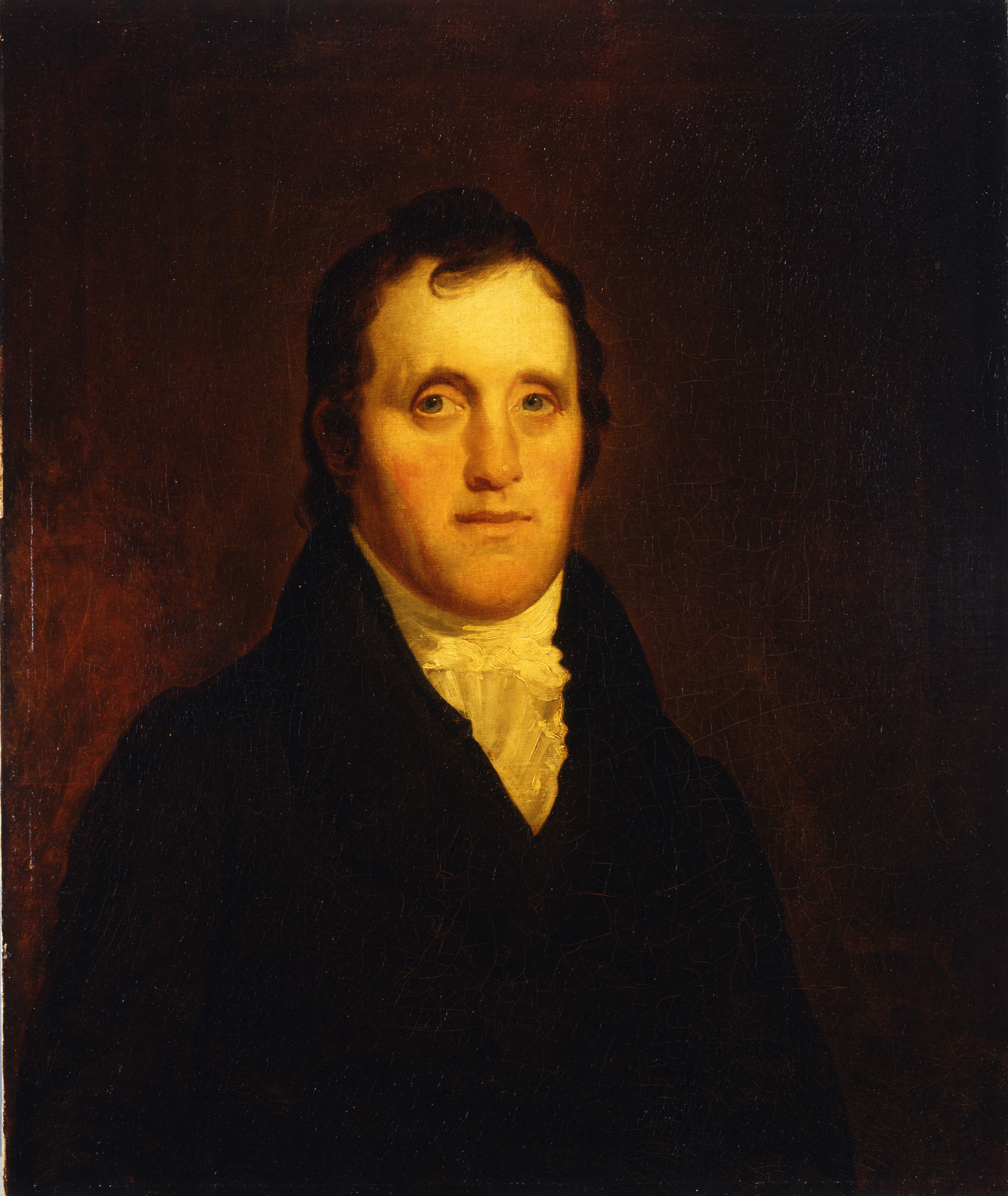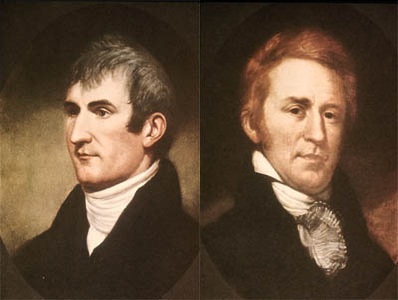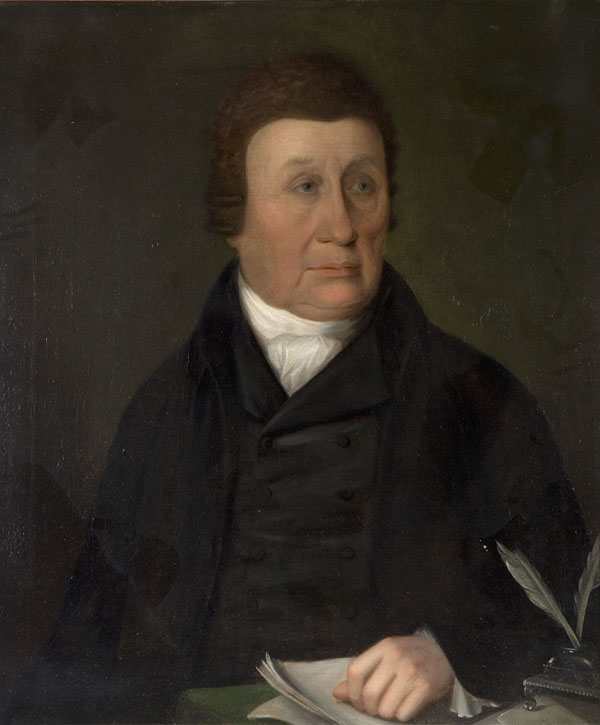|
Elias Earle
Elias Earle (June 19, 1762May 19, 1823) was a United States representative from South Carolina. Born in Frederick County in the Colony of Virginia, he attended private school and moved to Greenville County, South Carolina, in September 1787. He was one of the earliest ironmasters of the South, and prospected and negotiated in the iron region of Georgia. Earle was a member of the South Carolina House of Representatives from 1794 to 1797 and was a member of the South Carolina Senate in 1800. He was elected as a Democratic-Republican to the Ninth Congress (March 4, 1805 – March 3, 1807), was elected to the Twelfth and Thirteenth Congresses (March 4, 1811 – March 3, 1815), and was again elected to the Fifteenth and Sixteenth Congresses (March 4, 1817 – March 3, 1821). He died in Centerville, South Carolina, in 1823; interment was in Old Earle Cemetery, Buncombe Road, Greenville, South Carolina. Family Elias Earle was the son of Samuel Earle III, member of the Virginia Hous ... [...More Info...] [...Related Items...] OR: [Wikipedia] [Google] [Baidu] |
South Carolina
)''Animis opibusque parati'' ( for, , Latin, Prepared in mind and resources, links=no) , anthem = " Carolina";" South Carolina On My Mind" , Former = Province of South Carolina , seat = Columbia , LargestCity = Charleston , LargestMetro = Greenville (combined and metro) Columbia (urban) , BorderingStates = Georgia, North Carolina , OfficialLang = English , population_demonym = South Carolinian , Governor = , Lieutenant Governor = , Legislature = General Assembly , Upperhouse = Senate , Lowerhouse = House of Representatives , Judiciary = South Carolina Supreme Court , Senators = , Representative = 6 Republicans1 Democrat , postal_code = SC , TradAbbreviation = S.C. , area_rank = 40th , area_total_sq_mi = 32,020 , area_total_km2 = 82,932 , area_land_sq_mi = 30,109 , area_land_km2 = 77,982 , area_water_sq_mi = 1,911 , area_water_km2 = 4,949 , area_water_percent = 6 , population_rank = 23rd , population_as_of = 2022 , 2010Pop = 5282634 , population ... [...More Info...] [...Related Items...] OR: [Wikipedia] [Google] [Baidu] |
United States
The United States of America (U.S.A. or USA), commonly known as the United States (U.S. or US) or America, is a country primarily located in North America. It consists of 50 states, a federal district, five major unincorporated territories, nine Minor Outlying Islands, and 326 Indian reservations. The United States is also in free association with three Pacific Island sovereign states: the Federated States of Micronesia, the Marshall Islands, and the Republic of Palau. It is the world's third-largest country by both land and total area. It shares land borders with Canada to its north and with Mexico to its south and has maritime borders with the Bahamas, Cuba, Russia, and other nations. With a population of over 333 million, it is the most populous country in the Americas and the third most populous in the world. The national capital of the United States is Washington, D.C. and its most populous city and principal financial center is New York City. Paleo-Americ ... [...More Info...] [...Related Items...] OR: [Wikipedia] [Google] [Baidu] |
House Of Burgesses
The House of Burgesses was the elected representative element of the Virginia General Assembly, the legislative body of the Colony of Virginia. With the creation of the House of Burgesses in 1642, the General Assembly, which had been established in 1619, became a bicameral institution. From 1642 to 1776, the House of Burgesses was an instrument of government alongside the royally-appointed colonial governor and the upper-house Council of State in the General House. When the Virginia colony declared its independence from the Kingdom of Great Britain at the Fifth Virginia Convention in 1776 and became the independent Commonwealth of Virginia, the House of Burgesses became the House of Delegates, which continues to serve as the lower house of the General Assembly. Title ''Burgess'' originally referred to a freeman of a borough, a self-governing town or settlement in England. Early years The Colony of Virginia was founded by a joint-stock company, the Virginia Company, as a pr ... [...More Info...] [...Related Items...] OR: [Wikipedia] [Google] [Baidu] |
16th United States Congress
The 16th United States Congress was a meeting of the legislative branch of the United States federal government, consisting of the United States Senate and the United States House of Representatives. It met in Washington, D.C. from March 4, 1819, to March 4, 1821, during the third and fourth years of James Monroe's presidency. The apportionment of seats in the House of Representatives was based on the Third Census of the United States in 1810. Both chambers had a Democratic-Republican majority. Major events * A "speech for Buncombe County, North Carolina" given by North Carolina representative Felix Walker in 1820 was credited with introducing into the language the term "bunkum". * March 6, 1819: '' McCulloch v. Maryland'': Supreme Court ruled that the Bank of the United States is constitutional. * July 3, 1820: United States House of Representatives elections, 1820 began in Louisiana * August 7, 1820: 1820 United States Census conducted, eventually determining a population ... [...More Info...] [...Related Items...] OR: [Wikipedia] [Google] [Baidu] |
15th United States Congress
The 15th United States Congress was a meeting of the legislative branch of the United States federal government, consisting of the United States Senate and the United States House of Representatives. It met in the Old Brick Capitol in Washington, D.C. from March 4, 1817, to March 4, 1819, during the first two years of James Monroe's presidency. The apportionment of seats in the House of Representatives was based on the Third Census of the United States in 1810. Both chambers had a Democratic-Republican majority. Letter of December 1818 Two major treaties with the United Kingdom were approved, finalized and signed during the 15th Congress, both the Rush–Bagot Treaty and the Treaty of 1818, both of which pertained to the United States-Canada border, and both of which were overwhelmingly popular in the United States. President James Monroe and Secretary of State John Quincy Adams were credited with the accomplishments. A letter signed by many members of congress expressing "Gr ... [...More Info...] [...Related Items...] OR: [Wikipedia] [Google] [Baidu] |
13th United States Congress
The 13th United States Congress was a meeting of the legislative branch of the United States federal government, consisting of the United States Senate and the United States House of Representatives. It met in Washington, D.C. from March 4, 1813, to March 4, 1815, during the fifth and sixth years of James Madison's presidency. The apportionment of seats in the House of Representatives was based on the Third Census of the United States in 1810. Both chambers had a Democratic-Republican majority. The first two sessions were held at the Capitol building while the third, convened after the Burning of Washington, took place in the First Patent Building. Major events * September 10, 1813: War of 1812: Battle of Lake Erie * October 5, 1813: War of 1812: Battle of the Thames * March 27, 1814: Creek War: Battle of Horseshoe Bend * July 25, 1814: War of 1812: Battle of Lundy's Lane * August 25, 1814: War of 1812: Burning of Washington * September 11, 1814: War of 1812: Battle o ... [...More Info...] [...Related Items...] OR: [Wikipedia] [Google] [Baidu] |
12th United States Congress
The 12th United States Congress was a meeting of the legislative branch of the United States federal government, consisting of the United States Senate and the United States House of Representatives. It met in Washington, D.C. from March 4, 1811, to March 4, 1813, during the third and fourth years of James Madison's presidency. The apportionment of seats in the House of Representatives was based on the Second Census of the United States in 1800. Both chambers had a Democratic-Republican majority. Major events *November 6, 1811: Battle of Tippecanoe: William Henry Harrison defeated Tecumseh's forces * December 16, 1811: New Madrid earthquake * April 4, 1812: President Madison enacted a 90-day embargo on trade with the United Kingdom *April 20, 1812: Vice President George Clinton died *June 18, 1812: War of 1812: United States declared war on Great Britain *August 16, 1812: War of 1812: Detroit surrendered to the British. *October 13, 1812: War of 1812: the Battle of Queensto ... [...More Info...] [...Related Items...] OR: [Wikipedia] [Google] [Baidu] |
9th United States Congress
The 9th United States Congress was a meeting of the legislative branch of the United States federal government, consisting of the United States Senate and the United States House of Representatives. It met in Washington, D.C. from March 4, 1805, to March 4, 1807, during the fifth and sixth years of Thomas Jefferson's presidency. The apportionment of seats in the House of Representatives was based on the Second Census of the United States in 1800. Both chambers had a Democratic-Republican majority. Major events * March 4, 1805: President Thomas Jefferson begins his second term. * June 1, 1805: First Barbary War ends. * November 7, 1805: Lewis and Clark Expedition arrived at the Pacific Ocean. * September 23, 1806: Lewis and Clark Expedition returned to St. Louis, Missouri, thereby ending the exploration of the Louisiana Territory and the Pacific Northwest. * February 19, 1807: Former Vice President Aaron Burr was tried for conspiracy and acquitted. Major legislation * Marc ... [...More Info...] [...Related Items...] OR: [Wikipedia] [Google] [Baidu] |
Georgia (U
Georgia most commonly refers to: * Georgia (country), a country in the Caucasus region of Eurasia * Georgia (U.S. state), a state in the Southeast United States Georgia may also refer to: Places Historical states and entities * Related to the country in the Caucasus ** Kingdom of Georgia, a medieval kingdom ** Georgia within the Russian Empire ** Democratic Republic of Georgia, established following the Russian Revolution ** Georgian Soviet Socialist Republic, a constituent of the Soviet Union * Related to the US state ** Province of Georgia, one of the thirteen American colonies established by Great Britain in what became the United States ** Georgia in the American Civil War, the State of Georgia within the Confederate States of America. Other places * 359 Georgia, an asteroid * New Georgia, Solomon Islands * South Georgia and the South Sandwich Islands Canada * Georgia Street, in Vancouver, British Columbia, Canada * Strait of Georgia, British Columbia, Canada United K ... [...More Info...] [...Related Items...] OR: [Wikipedia] [Google] [Baidu] |
Southern United States
The Southern United States (sometimes Dixie, also referred to as the Southern States, the American South, the Southland, or simply the South) is a geographic and cultural region of the United States of America. It is between the Atlantic Ocean and the Western United States, with the Midwestern and Northeastern United States to its north and the Gulf of Mexico and Mexico to its south. Historically, the South was defined as all states south of the 18th century Mason–Dixon line, the Ohio River, and 36°30′ parallel.The South . ''Britannica.com''. Retrieved June 5, 2021. Within the South are different subregions, such as the |
Ironmaster
An ironmaster is the manager, and usually owner, of a forge or blast furnace for the processing of iron. It is a term mainly associated with the period of the Industrial Revolution, especially in Great Britain. The ironmaster was usually a large scale entrepreneur and thus an important member of a community. He would have a large country house or mansion as his residence. The organization of operations surrounding the smelting, refining and casting of iron was labour-intensive, and so there would be numerous workers reliant on the furnace works. There were ironmasters (possibly not called such) from the 17th century onwards, but they became more prominent with the great expansion in the British iron industry during the Industrial Revolution. 17th century ironmasters (examples) An early ironmaster was John Winter (Royalist), John Winter (about 1600–1676) who owned substantial holdings in the Forest of Dean. During the English Civil War he cast cannons for Charles I of England ... [...More Info...] [...Related Items...] OR: [Wikipedia] [Google] [Baidu] |
Greenville County, South Carolina
Greenville County is located in the state of South Carolina, in the United States. As of the 2020 census, the population was 525,534, making it the most populous county in the state. Its county seat is Greenville. The county is also home to the Greenville County School District, the largest school system in South Carolina. County government is headquartered at Greenville County Square. Greenville County is the most populous county in Upstate South Carolina, as well as the state. It is the central county of the Greenville-Anderson, SC metropolitan statistical area, which in turn is part of the Greenville-Spartanburg-Anderson combined statistical area. History 18th century In 1786, due to population growth in Ninety-Six District and the victory of the American Whigs over the British and their colonial Tory and Cherokee allies, the state legislature formed Greenville County (originally spelled Greeneville), named for General Nathanael Greene, the hero of the American southern ... [...More Info...] [...Related Items...] OR: [Wikipedia] [Google] [Baidu] |





